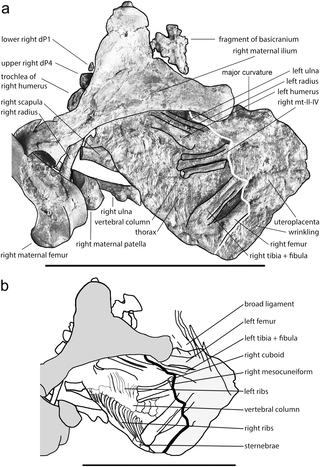Ancient Horse Foetus Identified from Fossil Remains
Scientists from the Senckenberg Research Institute (Frankfurt, southern Germany), working in conjunction with colleagues from the University of Veterinary Medicine (Vienna, Austria) have identified the fossilised remains of a prehistoric horse foetus. The 48-million-year-old fossil was excavated from the famous oil shales of Messel (near Frankfurt).
Fossil Discovery
The fossil was discovered fifteen years ago and set in resin to preserve it. Using a combination of scanning electron microscopy and high powered X-rays, the scientists were able to identify the remains of an unborn foal within the adult animal.
The Fossil of the Ancient Horse (White Ellipse Marks the Site of the Foetus Fossil)
Picture credit: Senckenberg Research Institute
Eurohippus Foetus
This is the oldest equine foetus known. The academic paper detailing this research has just been published in the scientific journal PLOS One. It is widely believed that horses evolved from small, five-toed forest animals such as Propalaeotherium, fossils of which have been found in the Messel shales. It seems that these ancient early horses thrived in the tropical forests of Europe that covered much of the Northern Hemisphere during the Eocene Epoch.
In this instance, the horse has been identified as an example of a genus called Eurohippus (Eurohippus. messelensis). This is a remarkable fossil discovery. An ancient mare preserved with her unborn foal.
For models and replicas of prehistoric animals including ancient horses: Wild Safari Prehistoric World Models.


